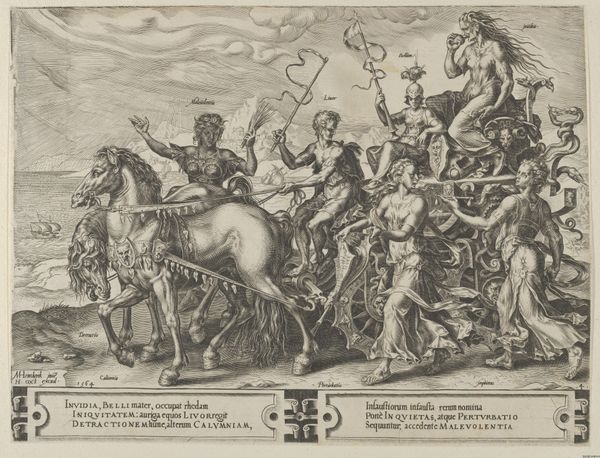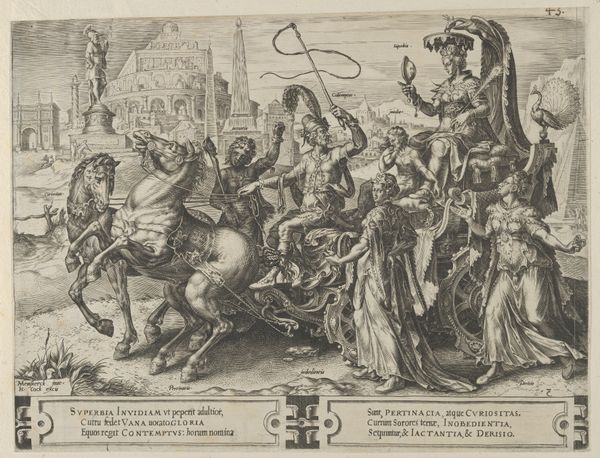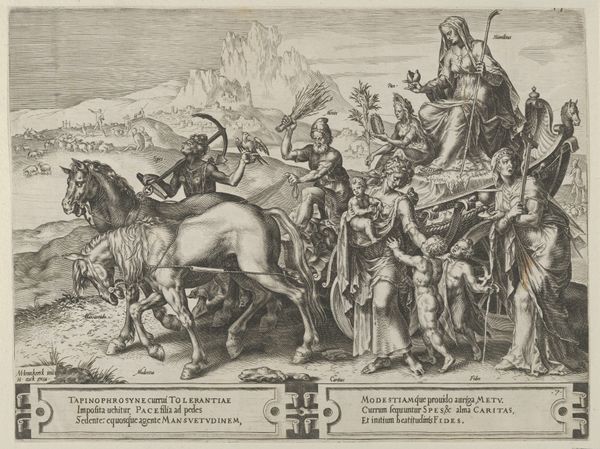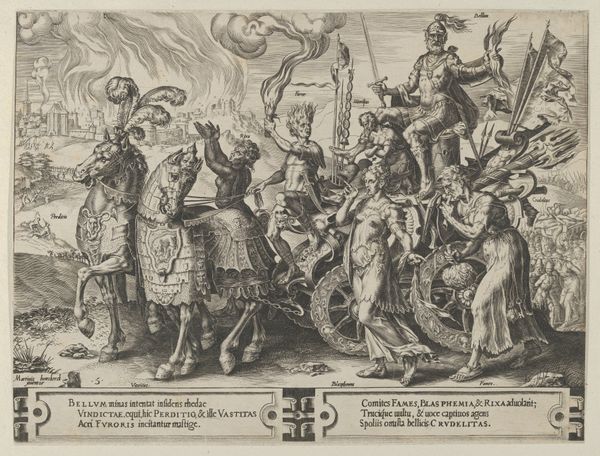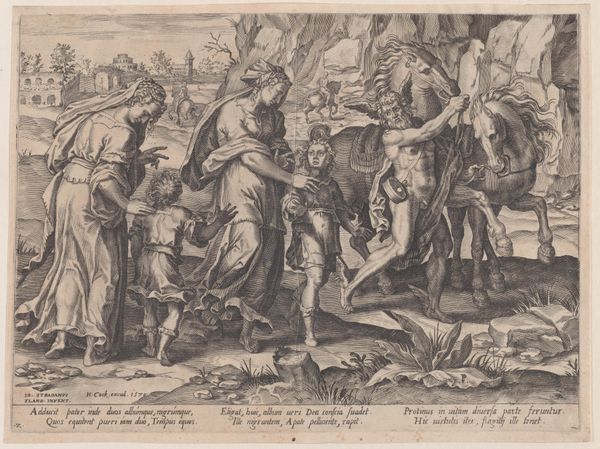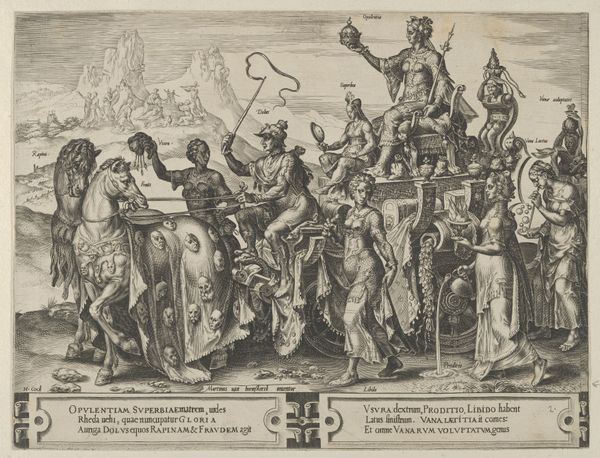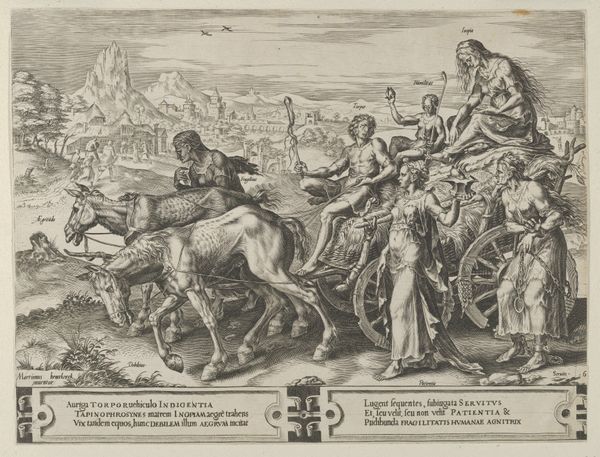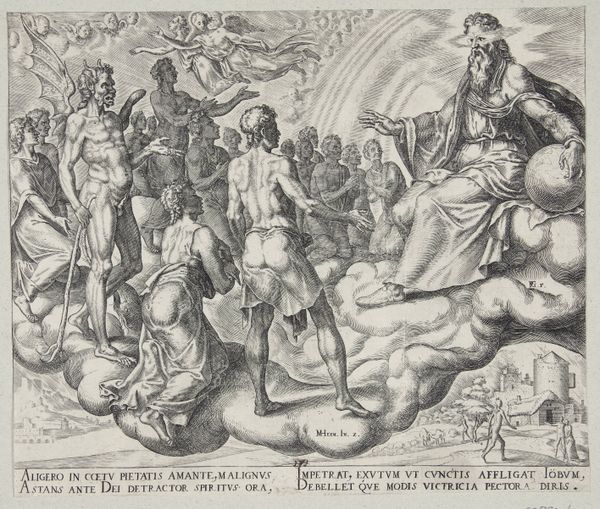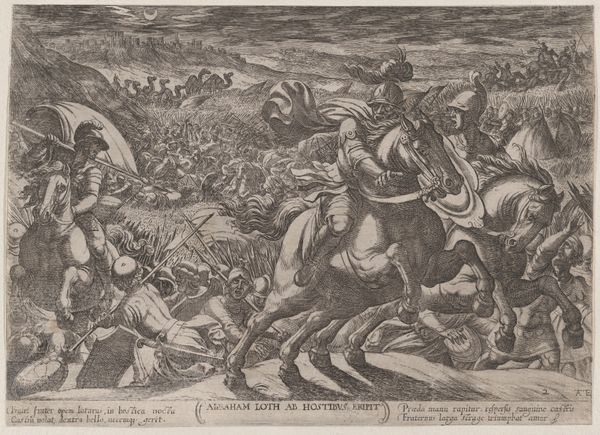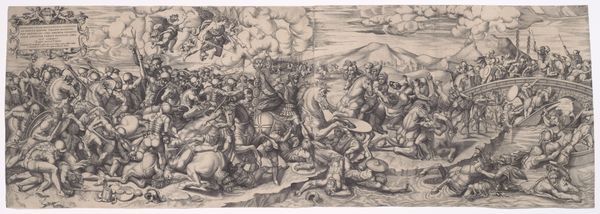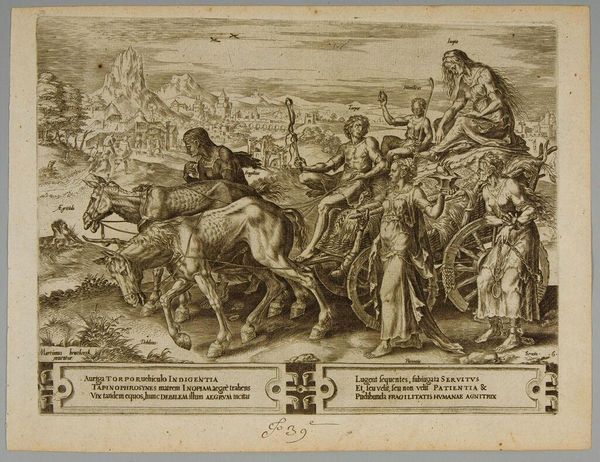
The Triumph of Peace, from The Cycle of the Vicissitudes of Human Affairs, plate 8 1564
0:00
0:00
drawing, print, engraving
#
drawing
#
allegory
# print
#
landscape
#
figuration
#
11_renaissance
#
horse
#
line
#
history-painting
#
engraving
Dimensions: Sheet: 8 3/4 × 11 9/16 in. (22.3 × 29.4 cm)
Copyright: Public Domain
Curator: Here we have "The Triumph of Peace," an engraving created in 1564 by Cornelis Cort, after a design by Frans Floris. It's currently part of the Metropolitan Museum's collection. Editor: Wow, a triumphal procession…or is it more like a chaotic parade? There's so much happening—it’s a wild combination of Roman grandeur and something a bit darker. I feel overwhelmed and vaguely seasick. Curator: That feeling of being overwhelmed isn't accidental. These prints were designed for educated audiences, referencing classical antiquity and allegorical traditions, encouraging viewers to engage actively in deciphering their meanings. Think of it as visual rhetoric for a turbulent period. Editor: Okay, turbulence makes sense. I see Peace enthroned at the top, serene enough, but everyone else seems to be in a rush to get somewhere. Love, Concord, and Utility pulling the chariot? It feels almost…desperate. Curator: Well, remember the broader cycle this image comes from, “The Vicissitudes of Human Affairs." These were times of religious and political strife across Europe. The print served a didactic purpose, showcasing the fruits of peace and harmony achieved through civic virtue. Editor: Right. So it’s like, “Here’s what we need!” Justice and Truth holding the train…and the angel with that stern expression is probably hard at work, Diligence herself? I guess you’d need all of them pulling together to achieve any kind of peace in the sixteenth century. Curator: Exactly. It emphasizes the necessary virtues for a stable society and, arguably, subtly criticizes the forces of discord at the time. The figure of Venus driving the horses indicates a need for Love, she can unite all these components into one peaceful nation, because every one will love. Editor: Looking at it now, the detail is astounding. Even on horseback, it seems peace is still so far from being achieved because we're seeing those details through lines in this monochromatic scheme! It has a nervous energy. It feels like Peace has to be wrestled into existence every single day. Curator: I agree. Cort’s skill in capturing the nuances of Floris's design helps articulate the socio-political function of art in the 16th century. How it operated within these systems of power and attempted to contribute to contemporary affairs, its capacity to guide us in this turbulent time. Editor: In a funny way, the artist and engraver's hard work kind of mirror what the figures in the image are up to: fighting, and yet striving to bring Peace in some shape or form. Thanks to art and love, you get something beautiful as an image and idea.
Comments
No comments
Be the first to comment and join the conversation on the ultimate creative platform.
